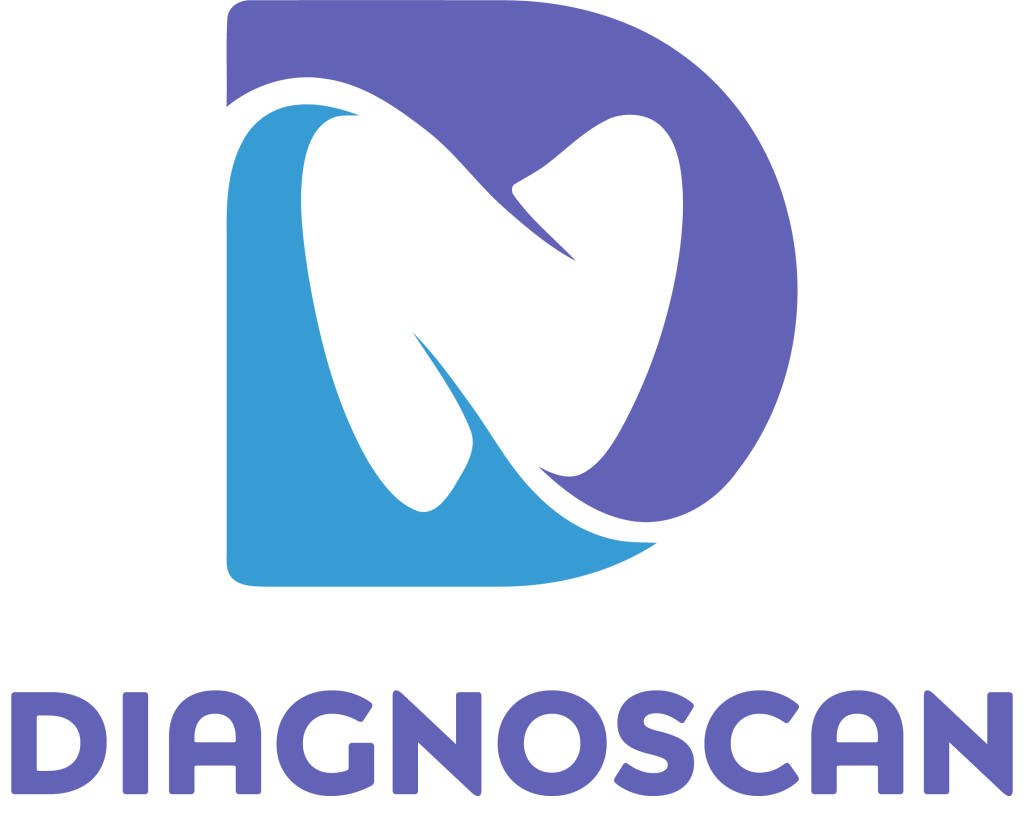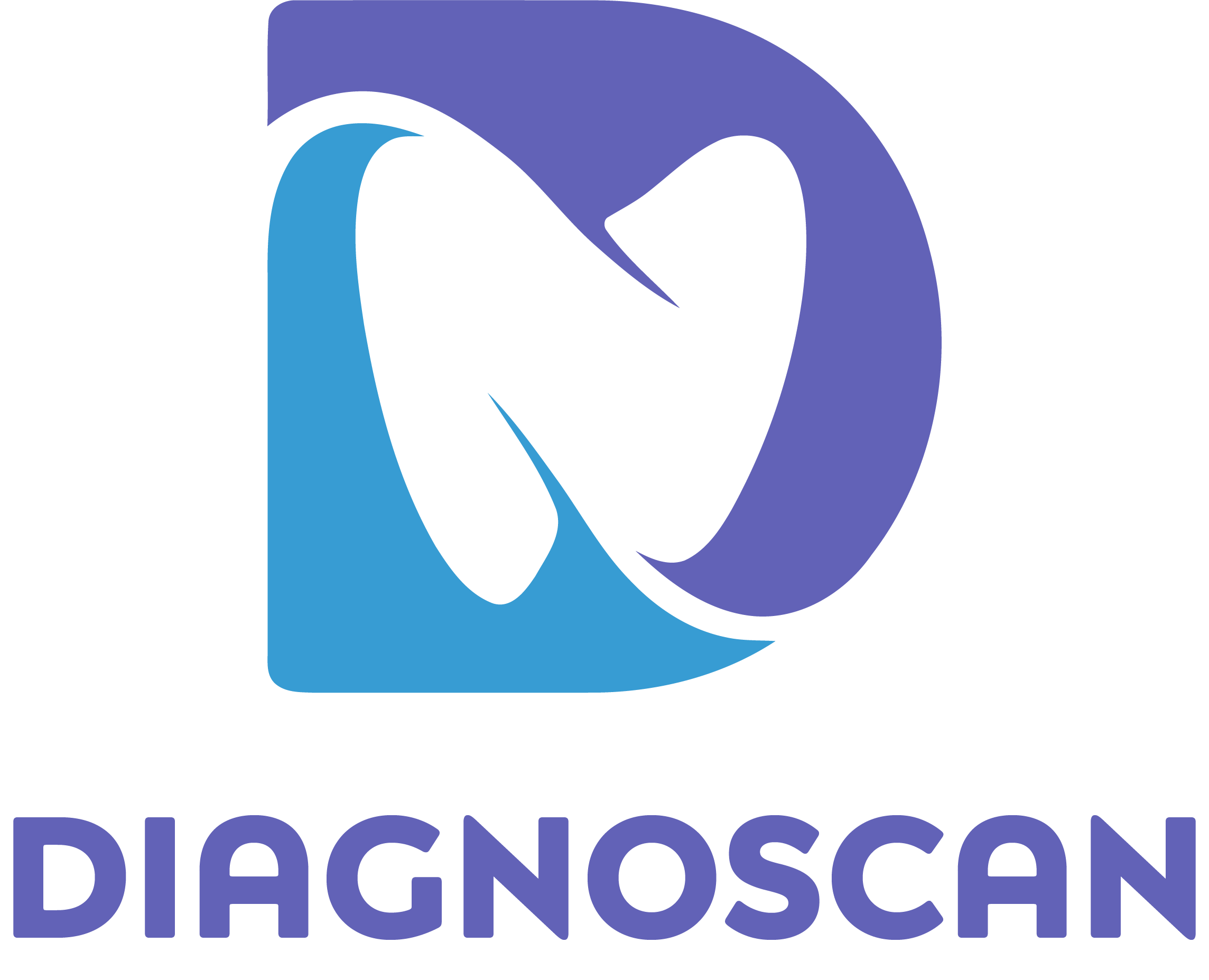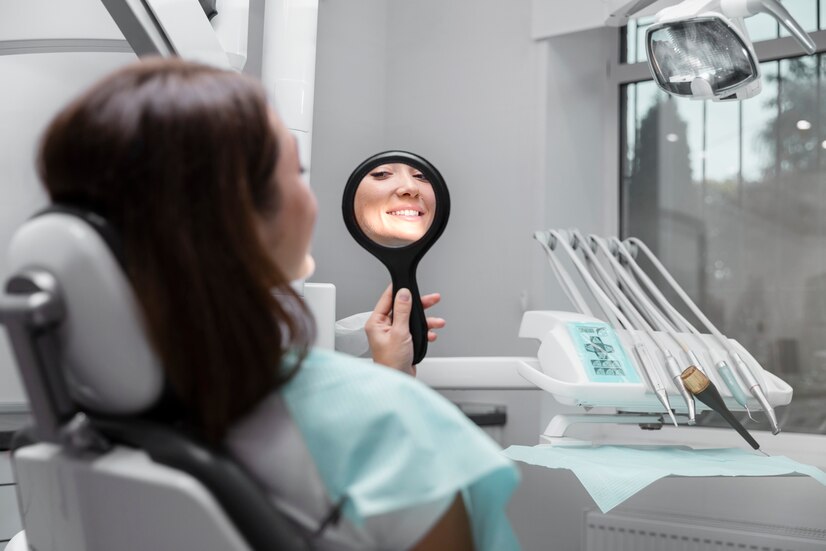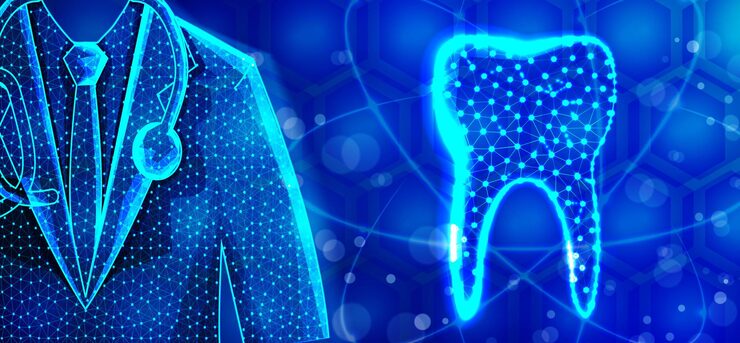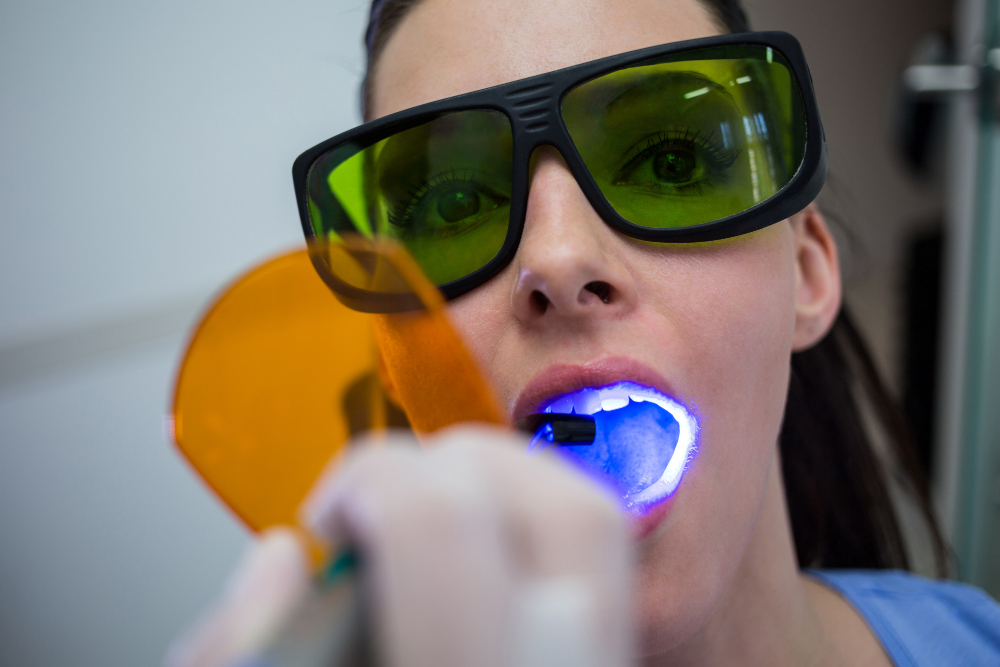Diagnoscan is one of the modern dental diagnostic innovations which applies transillumination technology to detect tooth decay and cracked tooth syndrome with great accuracy. Compared to traditional radiography, this optical instrument illuminates within teeth, so decay is visible as dark spots where light transmission is less. The device’s diagnostic sensitivity often surpasses X-rays in detecting anterior proximal caries and certain posterior lesions. Due to its compact size and non-radiation detection, Diagnoscan seamlessly integrates into dental practice workflows without the inconvenience of radiation. By combining advanced optics with practical everyday clinical application, Diagnoscan provides dentists with a safer and more efficient way of diagnosing everyday dental issues while also improving patient comfort during examinations.
The Science of Transillumination
Transillumination technology makes use of the transmission of high-intensity light via tooth structures. Healthy enamel and dentin transmit light well, whereas tooth decay scatters and absorbs light due to its disrupted mineral content. An optical contrast such as this renders transparent points evident that are detected by Diagnoscan through high diagnostic sensitivity. The method is particularly effective at detecting early demineralization and hairline fractures in cracked tooth syndrome, these being challenging areas where conventional radiography typically does not succeed. The physical science involved in this technique is founded on the principle that demineralized tooth structure is different in light-conducting characteristics from healthy structure. Diagnoscan’s proprietary light source optimizes this phenomenon, providing unobscured visual information without ionizing radiation. Such scientific foundations put the device especially at an advantage in detecting proximal caries that would otherwise be missed using other methods, offering dentists a clearer diagnostic image while patient safety is maintained via non-invasive identification.
Advantages Over Traditional Methods
Compared to conventional radiography, Diagnoscan offers several distinct benefits for detecting tooth decay and cracked tooth syndrome. Its transillumination technology provides immediate results without film processing or digital sensor placement, streamlining the examination process. The method’s diagnostic sensitivity is particularly notable for early lesions that haven’t yet created sufficient density changes to appear on X-rays. Additionally, the non-invasive detection approach eliminates radiation exposure concerns, making it ideal for pregnant patients, children, and cases requiring frequent monitoring. The device’s 0.5mm head diameter allows precise illumination of specific tooth areas, enhancing detection accuracy in difficult-to-image locations. Unlike radiographic methods that compress 3D structures into 2D images, Diagnoscan’s optical approach preserves depth perception, aiding in the assessment of lesion extent and fracture lines. These advantages position transillumination technology as a valuable complement or alternative to traditional diagnostic methods in modern dental practice.
Technical Specifications and Design
Diagnoscan’s compact design facilitates a fine balance between power and precision. The device’s compact size has a remarkably low 0.5mm head diameter, allowing clinicians to pinpoint very specific tooth surfaces. This accuracy in light delivery is critical to catch the subtlety of early indications of tooth decay and tiny fractures in cracked tooth syndrome. The design of the unit ensures longevity in the clinical environment and maintains the simplicity necessary to easily integrate with existing dental setups. Unlike bulkier radiographic units, Diagnoscan does not require special protection or additional safety measures, as its non-invasive detection method is not a radiation hazard. The ease of working the device provides for access by all dental staff, and its robust performance ensures proper diagnosis in a wide range of clinical applications. These technical attributes make Diagnoscan a powerful and effective addition to modern dental diagnosis.
Clinical Applications and Uses
Diagnoscan excels in specific clinical situations where the advantages of transillumination technology are most beneficial. The device is extremely helpful for the detection of anterior proximal caries, a common but challenging location for traditional methods. Its ability to detect tooth decay at its earliest stages benefits minimally invasive treatment approaches, allowing more natural tooth structure to be conserved. In cracked tooth syndrome, the optical method often reveals fractures that other methods fail to detect. The fact that the detection is non-invasive makes Diagnoscan ideal for pediatric dentistry, where anxiety in patients has to be kept to a minimum, and also for cases requiring repeated monitoring without concerns about radiation. The technology also differentiates between stains and active decay, avoiding unnecessary treatment. Although not replacing all radiographic needs, Diagnoscan provides valuable adjunctive information that supports diagnostic confidence. Its direct visualization facilitates patient education in real time, demonstrating decay or cracks directly rather than requiring reliance on X-ray interpretations that are abstract. These applications represent ways that transillumination technology fills specific niches in dental diagnostics.
The Future of Optical Diagnostics
As transillumination technology evolves, devices like Diagnoscan are poised to play an expanding role in dental practice. The inherent advantages of optical methods—non-invasive detection, absence of radiation, and immediate visualization—align perfectly with dentistry’s preventive philosophy. Future developments may enhance diagnostic sensitivity further through advanced light spectrum analysis or integration with digital imaging systems. The technology’s potential for teledentistry applications could expand access to quality diagnostics in remote areas. While Diagnoscan currently focuses on tooth decay and cracked tooth syndrome, similar optical principles might eventually aid in detecting other dental conditions. The device’s simple yet effective approach demonstrates how thoughtful application of basic scientific principles can yield significant clinical improvements. As more practices adopt this technology, its role in standard diagnostic protocols will likely grow, particularly for early intervention cases where preserving tooth structure is most critical. Diagnoscan represents an important step toward safer, more patient-friendly dental diagnostics.
Conclusion
Diagnoscan’s transillumination technology provides a scientifically based alternative for the detection of tooth decay and cracked tooth syndrome. Capitalizing on the optical characteristics of dental tissues, it obtains excellent diagnostic sensitivity without the use of radiation. The design of the device itself prioritizes practicality, its small size and fine light delivery making it a valuable addition to any practice. While most appropriate for anterior proximal caries and certain posterior lesions, its non-destructive detection system is beneficial to everyone, especially patients who require regular surveillance. Diagnoscan is not a substitute for all radiographic needs but provides valuable supplementary information that enhances the diagnostic accuracy. As dentistry progresses towards prevention and minimal intervention, products like this will assume an increasingly important role. The device demonstrates the way fundamental scientific principles can lead to major clinical progress.
